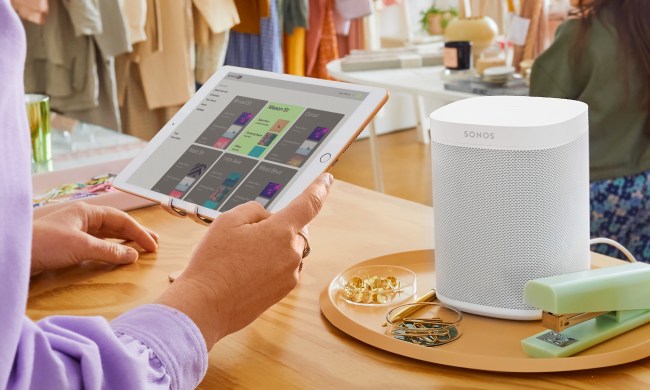Thanks to new support for OverDrive’s Libby app, Sonos speakers can now be used to listen to free audiobooks from your local library, providing a much-needed alternative to bingeing Netflix‘s entire catalog of shows.
Here’s how to get going with free library audiobooks on your Sonos speakers:
Sign up for a library card if you don’t already have one
If you’ve already got a valid library card from your local public library, you can skip this step. If you don’t have one, the current situation may make it tricky to get one as most libraries require that you show up in-person with proof of your address to get a card. However, some libraries are now issuing temporary e-resource cards that can be used instead. Here’s an example from the Portland Public Library’s website.
You will also need your PIN for the next steps, so if you don’t have one or can’t remember it, contact your library and see if they can give you one or reset it for you.
Download the Libby by OverDrive app to your phone
You’ll find the free Libby app for your mobile device on the App Store or Google Play, or you can use it as a web app in your browser.
Once installed, the app will ask you to confirm your local public library location. It can also guess which one you use if you give it access to your device’s location services. We found this technique to be highly accurate.
Add a library card to the Libby app
Once you’ve selected your local library, the Libby app will ask you to enter your library card number and PIN. It then verifies this info with your library and if all goes well, your card will be confirmed and you can give it a custom name — a handy feature given that you can actually store more than one card within the app.
Pick an audiobook
Once your card is validated, the Libby app will give you access to browse your library’s audiobook selection. Keep in mind, each library has a different selection of titles to choose from and it’s possible the one you want is simply unavailable. The library we used for testing showed more than 93,000 fiction and over 57,000 non-fiction titles.
When you find a title you want to listen to, simply tap the Borrow button and it will be downloaded and added to your Libby library. Our titles had 21-day loan periods, but your library’s loans may differ.
Add Libby as a source inside the Sonos app
Before you can listen to your borrowed Libby books on your Sonos system, you need to connect the two systems. Open your Sonos app and tap the Settings button in the lower right corner.
- Tap on Services & Voice
- Under the Music & Content section, scroll down to the bottom of the list and tap Add a Service
- From the alphabetical list, choose Libby by OverDrive
- You’ll be asked to authorize Sonos to use the Libby app by entering an eight-digit code. To get that code:
- Switch back to the Libby app (or go to the web app)
- Scroll to the very top of the app’s Library or Shelf tabs
- Tap and hold on the small circular menu icon
- Make note of the eight-digit code it shows you
- If no code is displayed, try repeating these steps — remember, you must tap and hold to see the code
- Switch back to the Sonos app and enter the eight-digit code
- You should get a confirmation that Libby has been added and you’ll be prompted to give the account its own name if you wish
Find and play your Libby audiobooks in Sonos
Now that you’ve successfully connected the two apps, you should be able to browse Libby within the Sonos app just like you would with a music service such as Apple Music or Spotify.
Sonos will show you all of your currently borrowed audiobooks, let you play them on any Sonos speaker in your house, and view a description of the book. Audiobooks can be added to the My Sonos tab for quicker access and your reading (listening) progress will be remembered within the Sonos app and the Libby app, which means you can continue listening outside your home and vice versa.
Regular e-books, too
Don’t forget, the Libby app can also be used to borrow e-books from your local library. You can read these in the Libby app itself, or — for U.S. residents only — you can add these books to your Kindle e-reader.



